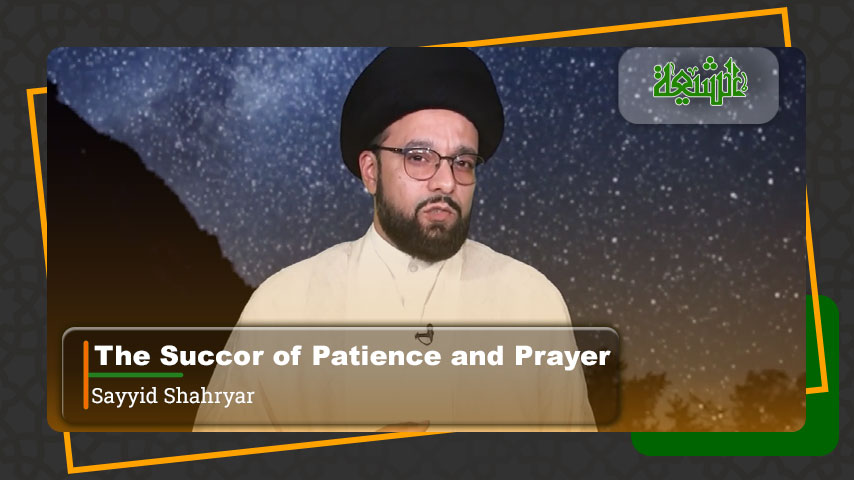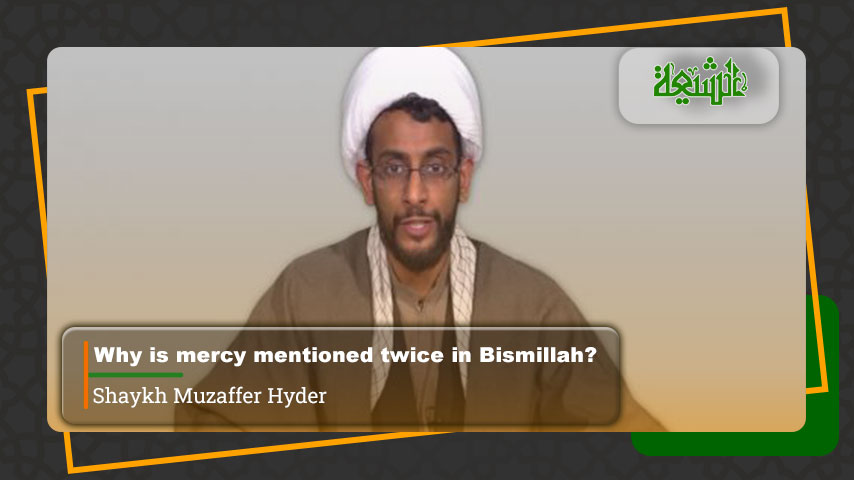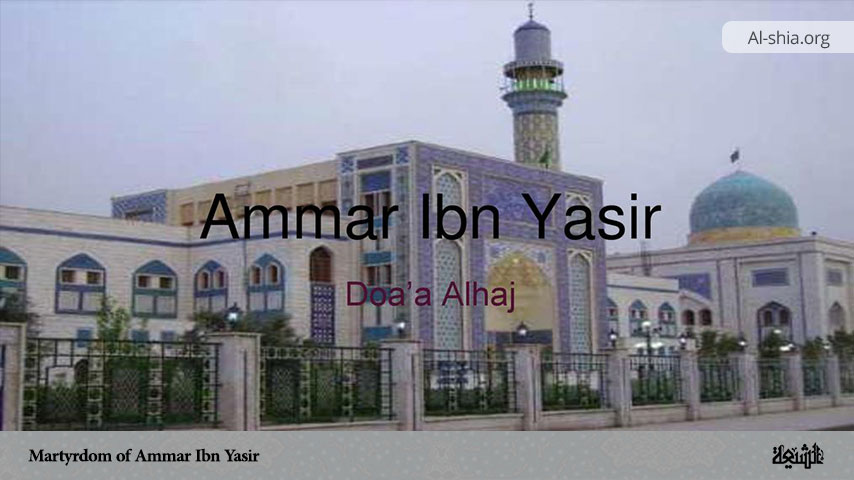The fortieth day after the martyrdom of Imam Husain ibn ʿAli (a), known as Arbaeen, holds a profound place in the hearts of millions of Muslims, especially within the Shia tradition. It marks not only the completion of a mourning period but also the crystallization of a message that transcends time, borders, and sectarian lines.
The fortieth day [Arbaeen] is more than a ritual commemoration—it is a symbol of unity, a moment when diverse individuals come together to reaffirm their allegiance to truth, justice, and human dignity as exemplified by Imam Husain’s sacrifice at Karbala in 61 AH (680 CE). This paper explores the various dimensions of Arbaeen as a symbol of unity—from its historical roots and status to its role in attaining Islamic unity.
Historical Roots of the Fortieth Day Pilgrimage
The twentieth of the month of Ṣafar is known as the Day of Arbaeen. In literal sense, the Arabic term “Arbaeen”, which means forty, is one of the concepts that have a special place in the Qur’an[1] and hadiths[2] [such as the hadiths of memorizing forty hadiths[3], sincerity of action for forty days[4], recitation of Dua al-‘Ahd for forty consecutive mornings[5] , and the intercession of forty believers for the deceased person[6]].
Technically, the term Arbaeen [the fortieth day] is used among the Shiites to denote the fortieth day of the Day of Ashura, the day the beloved grandson of Prophet Muhammad (peace be upon him and his Household); Imam Husain (peace be upon him) was martyred along with 72 members of his family (including an infant) and loyal Companions at Karbala on Muharram 10, 61 AH[7] (correspondent to October 10, 680).
Meanwhile, the origin of the fortieth day [Arbaeen] visitation of Imam Husain, peace be upon him, can be traced back to 61 Hijrah, when a notable companion of the Prophet, Jābir ibn Abdullah Anṣārī arrived in Karbala from Medina on the twentieth of Ṣafar and found the graves of Imam Husain (peace be upon him) and his companions on the plains of Karbala. He was considered to be the first person to visit the place after the tragic incident on the Day of Ashura, 61 Hijrah[8].
Status of Arbaeen Pilgrimage
The fortieth day [Arbaeen] of Imam Husain is one of the most spiritually powerful and symbolically rich commemorations in the Islamic world. The fortieth day of Imam Husain is not merely a historical memory but a living tradition. It is deeply rooted in Islamic teachings and supported by narrations from the Imams of Ahl al-Bayt (AS). Imam Hasan al-ʿAskari (A.S) famously said: “The signs of a believer are five, 51 units of prayers, visitation of Arbaeen, wearing the ring on the right hand, prostrating one’s forehead on the ground, and reciting Bismillah Al-Rahman Al-Rahim, loudly in prayers[9].” This narration underscores the religious and spiritual significance of visiting the grave of Imam Husain (AS) specifically on the fortieth day.
The first fortieth day [Arbaeen] of Imam Husain was marked by the arrival of Jabir ibn ʿAbdullah al-Ansari, one of the Prophet’s companions, at the grave of Imam Husain in Karbala, where he reportedly recited salutations and wept over the tragedy[10]. This visit laid the foundation for the enduring tradition of the pilgrimage that is observed by millions today.
According to some narrations, walking to the Ziyarah of Imam al-Husain, peace be upon him, is itself relevant and has lots of rewards. In one narration, Imam al-Sadiq, peace be upon him, said: “Whoever visits Imam Husain on foot, God will write one good deed for him, remove one sin from him for every step he takes, and raise his rank by one degree. When he goes for the visitation (Ziyarah), the Almighty God will appoint two angels for him and order them to write down every good that comes out of his mouth and omit whatever is bad and evil. And when he returns, they will be with him and say farewell to him, saying: “O saint of God! Your sins have been forgiven, and you are among the party of God (Hizbullah), the party of the Messenger of God, and the party of the Prophet’s pure Household (Ahl al-Bayt). We swear by God! You will never see the Hellfire, and the fire will never see you and will never be its prey[11].”
In the light of the above, it can be established that the act of visitation to Imam al-Husain, peace be upon him, on the fortieth day of his glorious martyrdom is not an innovation, rather, it is from the teachings of the Prophet’s pure Household [Ahl al-Bayt], the inheritors of Prophet’s knowledge and the leaders of the Muslim community.
In a statement of His Eminence, the Supreme Leader of the Islamic Republic of Iran, Sayyed Ali Khamenei, on the fortieth Day of Ashura, he said: “The first blossom of Ashura and the first bubbles of the spring of love for Husain bloomed in Arbaeen. The attractive magnetism of Imam Husain attracted the first hearts to himself during Arbaeen; Jābir ibn Abdullah and Atiyah’s visitation of Imam Husain (PBUH) on the fortieth day (Arbaeen) after his martyrdom was the beginning of a blessed movement that has been continuously and successively more glorious, more attractive and more passionate throughout the centuries until today and has made the name and memory of Ashura more alive in the world day by day[12].”
The Opportunities of Islamic Unity in the Arbaeen Procession
Islam is a religion of unity and oneness, with one God [i.e., Allah], one Prophet [i.e., Hazrat Muhammad], and one Holy Book [i.e., Qur’an]. The Islamic nation has been introduced in the Holy Qur’an (Qur’an 21:92) as a “united nation” because it has a single common goal and is connected and united with one another through it.
Undoubtedly, the most important issue in the Islamic world today is the issue of unity among the adherents of Islam. For meaningful progress and development to be achieved in any society, unity is a priority. In other words, no meaningful development and progress could be achieved in a disunited society.
It is on this basis, therefore, that the glorious Qur’an enjoins the Muslims, all together, to unite to form a united community and to shun division, as it is considered a divine wrath (Qur’an 3: 103). In the opinion of Allamah Ṭabāṭabāī, the ‘cord of Allah’ unto which we are enjoined to hold unto the glorious Qur’an alone or both the Qur’an and the Holy Prophet (peace be upon him and his household)[13]. On the other hand, Ayatollah Makārim Shīrāzī, the clause ‘cord of Allah’ might be interpreted to mean ‘Islam’, ‘Qur’an’, or ‘any means or medium through which one may connect himself or communicate with God’[14].
Meanwhile, the following points could be derived from the above-quoted Qur’anic verse:
- Unity of the Muslim or Islamic unity is a divine responsibility, and it is considered an obligatory one. This is because the expression in the verse [Wa ‘taṣimū, i.e., ‘Hold fast’] indicates an obligation. Ayatollah Khamenei said: “The Islamic Unity is definitely a Qur’anic obligation. The unity of Muslims is not a tactical matter that some people assume we should be united in certain situations. No, it is a principle. Cooperation between Muslims is necessary. If Muslims are united, they will all be strong[15].”
- Disunity is prohibited and forbidden because the expression in the verse [Wa lā tafarraqū, i.e., ‘Do not be divided’] indicates a prohibition (Haram). In light of this, the Muslims must avoid sectarianism and any form of division, as this will weaken and deprive them of development.
- Considering the word [Jamī‘an, i.e., ‘All-together’] in the verse, the efforts towards attaining Islamic unity must be a collective one. That is to say, Islamic unity is a collective responsibility of the Muslim community.
- From the verse, it is obvious that unity is a divine blessing while disunity and divisions into sects are indeed a divine wrath, which must be avoided. This also conforms to the saying of the Prophet Muhammad when he said: “Unity is a source of mercy, and division is a source of punishment.[16]“
Meanwhile, the fortieth day [Arbaeen] procession in Iraq serves as a powerful platform for fostering unity among Muslims of various denominations and even among followers of different faiths. A central unifying factor is the universal love for Imam Husain (peace be upon him), revered by nearly all Muslims.
Participating in the Arbaeen pilgrimage is one of the most practical expressions of this shared devotion, offering a tangible space where Sunnis, Shiites, and even members of other Abrahamic religions come together in solidarity. Additionally, the massive scale of the procession encourages interaction and dialogue, reducing ignorance and intolerance by allowing participants from diverse backgrounds to learn about and appreciate one another’s beliefs and practices.
Moreover, the fortieth day [Arbaeen] presents a rare opportunity for religious scholars and intellectuals from different Islamic schools to engage in meaningful dialogue about the common challenges facing the Muslim world.
Conclusion
The fortieth day after the martyrdom of Imam Husain (peace be upon him), known as Arbaeen, has transcended its historical origin to become a vibrant symbol of global Islamic unity. Through the shared love for Imam Husain, the fortieth day gathers millions of Muslims—and increasingly, members of other faiths—who walk together in peace, compassion, and remembrance. It is a living expression of the values Imam Husain stood for: justice, dignity, and resistance to oppression. These values are not exclusive to any one group but resonate across sectarian, ethnic, and even religious divides.
The fortieth day also creates a unique opportunity for dialogue and mutual understanding among the followers of different Islamic schools of thought. It enables interaction not only among ordinary believers but also among scholars and religious leaders, who come together to discuss pressing issues facing the Muslim world. In doing so, the fortieth day helps to dismantle barriers built by ignorance, prejudice, or propaganda. As the Arbaeen pilgrimage continues to grow in scale and significance, its message becomes clearer: unity is not only possible but necessary. The fortieth day stands as a timeless call for solidarity—reminding all believers that what unites them is far greater than what divides them.
Notes
[1] . Qur’an 2: 51; 5:26; 7: 142; 46:15.
[2] . Majlisi, 1982: vol. 2, p. 156, Hadith 10; Kulayni, 1986: vol. 1, p. 49, Hadith 7
[3] . Majlisi, 1982: vol. 2, p. 156, Hadith 10; Kulayni, 1986: vol. 1, p. 49, Hadith 7
[4] . Kulayni, 1986: vol. 2, 16, Hadith 6.
[5] . Majlisi, 1982: vol. 99, p. 111.
[6] . Ibn Ḥajjāj Nishābūri, n.d: vol. 2, 655, Hadith 948.
[7] . cf: Shaykh Mufid, n.d: pp. 336-340
[8] . Ṭūsī, Muḥammad ibn Ḥasan (1991). Miṣbāḥ al-Mujtahid, p. 787
[9] . Ṭūsī, Muḥammad ibn Ḥasan (1986). Tahdhīb al-Aḥkām vol. 6, p. 52; Ibn Tawus, Ali ibn Musa (2017). Iqbāl al-A’māl, vol. 1, p. 110.
[10] . Ibn Qulawayh, Kāmil al-Ziyārāt, p. 268.
[11] . Majlisi, 1982: vol. 98, pp. 27-28; Ṭūsī, 1986: vol. 6, p. 43, Hadith 89; Ibn Babaweyh, 1985: p. 91
[12] . Ayatollah Khamenei, Ali (2018). Arbaeen is the path of an insightful love
[13] . Ṭabāṭabāī, 1986: vol. 6, pp. 280-281
[14] . Makārim Shīrāzī, n.d: vol. 1, pp. 394-395.
[15] . Ayatollah Khamenei, Ali (2018). Arbaeen is the path of an insightful love, October.
[16] . Al-Muttaqi al-Hindi, 1981: vol. 7, p. 558, Hadith 20242.
References
Al-Muttaqi al-Hindi, ‘Alā al-Din Ali (1981). Kanz al-‘Ummāl fī Sunan al-aqwāl wa al-af ‘āl (fifth edition). N.P: Risalat Institute.
Ayatollah Khamenei, Ali (2018). Arbaeen is the path of an insightful love. https://english.khamenei.ir/print/6034/Arbaeen-is-the-path-of-an-insightful-love
Ayatollah Khamenei, Ali (2022) Unity between Islamic nations is possible but needs action. https://english.khamenei.ir/news/9221/Unity-between-Islamic-nations-is-possible-but-needs-action
Ibn Ḥajjāj Nishābūri, Muslim (n.d). Ṣaḥīḥ Muslim. Beirut: Dār Iḥyā Al-Turāth Al-‘Arabī.
Ibn Qulawayh al-Qummī. Kāmil al-Ziyārāt. Najaf: Al-Maṭbaʿah al-Ḥaydariyyah, 1956.
Ibn Tawus, Ali ibn Musa (2017). Iqbāl al-A’māl (first edition), Translator: Ali Peiravin & Talat Hune Peiravi. Qom: Ansariyan Publications.
Kulayni, Muḥammad ibn Ya’qub (1986). Al-Kāfi (fourth edition). Annotator: Ghaffāri ‘Ali Akbar & Muḥammad Ᾱkhundi. Tehran: Dār al-Kutub al-Islamiyyah.
Majlisi, Muḥammad Baqir ibn Muḥammad Taqqi (1982). Biḥār al-Anwār al-Jāma’a li dirar Akhbār al-Aimmat al-Aṭhār (second edition). Beirut: Dār Iḥyā Al-Turāth Al-‘Arabī.
Makārim Shīrāzī, Nāṣir et al (n.d). Commentary Nimuneh (first edition). Translator: Mansour Amini Baghbadarani. Qom: Imam Ali ibn Abi Talib (a.s) School.
Qara’i, Ali Quli (2005). The Qur’an: With a phrase-by-phrase English translation (second edition). London: Islamic College for Advanced Studies (ICAS) Press.
Shaykh Mufid (n.d). Kitab al-Irshad: The Book of guidance into the lives of the twelve Imams. Translator: I.K.A Howard. N.P.
Ṭabāṭabāī, Muḥammad Ḥusayn (1986). Al-Mīzān: An Exegesis of the Qur’ān (first edition). Translator: Sayyid Saeed Akhtar Rizvi. Tehran: World Organization For Islamic Services (WOFIS).
Ṭūsī, Muḥammad ibn Ḥasan (1986). Tahdhīb al-Aḥkām (fourth edition). Tehran: Dār al-Kutub al-Islamiyyah.
Ṭūsī, Muḥammad ibn Ḥasan (1991). Miṣbāḥ al-Mujtahid. Beirut: Mu’ssasat Fiqh al-Shi’ah.


















